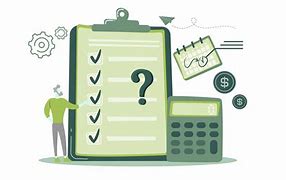Planning for Retirement: A Comprehensive Guide


Retirement. The word alone can evoke a mixture of excitement , relief , and maybe even a little anxiety , right? It’s a huge life change , a transition that demands planning and careful consideration. So, are you ready to trade in the daily grind for leisurely days filled with travel , hobbies , and spending time with loved ones? This comprehensive guide will be your ultimate roadmap to a stress-free , secure , and fulfilling retirement journey. We’ll dive deep into all the important aspects , from budgeting and savings strategies , to managing investments , and ensuring your health and well-being in your golden years. Buckle up , because it’s time to take control of your future!
Let me know if you want more suggestions, or need any changes made.
Planning for Retirement: A Comprehensive Guide
Retirement is a significant milestone in life, marking a transition from a working career to a period of leisure and relaxation. However, achieving a comfortable and fulfilling retirement requires careful planning and preparation. This comprehensive guide will delve into the intricacies of retirement planning, providing you with the knowledge and tools to secure your financial future.
What is Retirement Planning?
Retirement planning encompasses a range of strategies and decisions aimed at ensuring financial security and well-being during your post-working years. It involves setting financial goals, estimating future expenses, developing a savings plan, and making sound investment choices to build a nest egg that will support your desired lifestyle.
Why is Retirement Planning Important?
Retirement planning is crucial for a myriad of reasons. It:
- Provides Financial Security: A well-structured retirement plan ensures you have the financial resources to cover your expenses, maintain your standard of living, and enjoy your retirement years without financial stress.
- Allows You to Achieve Your Goals: Retirement planning empowers you to set and pursue your retirement goals, whether it’s traveling the world, pursuing hobbies, or spending quality time with loved ones.
- Provides Peace of Mind: Knowing that your financial future is secure allows you to enjoy your retirement years with peace of mind, free from financial worries.
Benefits of Early Retirement Planning
The earlier you begin planning for retirement, the better. Early planning offers numerous advantages:
- Time is Your Ally: The power of compounding allows your investments to grow exponentially over time. The earlier you start, the longer your money has to work for you, resulting in greater returns.
- Flexibility and Choice: Early planning gives you more flexibility and control over your financial future, allowing you to adjust your savings strategy as needed.
- Reduced Stress: Planning early eliminates the stress of scrambling to catch up later in life, ensuring a smooth transition into retirement.
Setting Your Retirement Goals
The first step in retirement planning is to define your goals. What do you envision your retirement years looking like? Consider:
- Desired Lifestyle: What activities do you want to pursue in retirement? Travel, hobbies, volunteering?
- Financial Independence: Do you want to be completely financially independent, or rely on a combination of savings and other sources of income?
- Timeframe: When do you plan to retire? Knowing your desired retirement date will guide your savings strategy.
Determining Your Retirement Needs
Once you have a clear picture of your retirement goals, you need to assess your financial needs. This involves:
- Estimating Expenses: Project your annual expenses in retirement, including housing, healthcare, food, transportation, entertainment, and travel.
- Considering Inflation: Factor in the impact of inflation on your future expenses. Inflation erodes the purchasing power of money over time, so you need to save more to maintain your desired lifestyle.
- Accounting for Healthcare Costs: Healthcare expenses can be significant in retirement. Plan for these costs, considering the potential for rising healthcare costs over time.
Defining Your Retirement Lifestyle
Your retirement lifestyle will significantly impact your financial needs. Factors to consider include:
- Location: Living in a high-cost area will require a larger nest egg than living in a more affordable region.
- Housing: Will you downsize, move to a different location, or stay in your current home? Your housing costs will vary depending on your choices.
- Travel: Do you plan to travel extensively in retirement? Factor in travel expenses, including airfare, accommodation, and activities.
Setting Realistic Expectations
It’s essential to set realistic expectations about your retirement finances. Be honest about your spending habits, income potential, and the potential impact of market fluctuations.
Calculating Your Retirement Savings Needs
To determine how much you need to save for retirement, consider:
- Retirement Income: What income will you need to cover your expenses in retirement?
- Savings Rate: How much can you afford to save each year?
- Investment Returns: Estimate the average annual return you expect on your investments.
Estimating Your Retirement Expenses
Accurately estimating your retirement expenses is crucial for planning. Consider:
- Housing: Mortgage payments, property taxes, insurance, and maintenance costs.
- Healthcare: Medical insurance premiums, out-of-pocket expenses, and long-term care.
- Food: Groceries, dining out, and entertainment.
- Transportation: Vehicle payments, fuel, maintenance, and public transportation.
- Travel: Vacation costs, including airfare, accommodation, and activities.
- Hobbies and Interests: Costs associated with pursuing hobbies and interests in retirement.
Considering Inflation and Interest Rates
Inflation erodes the purchasing power of money over time, so you need to factor it into your retirement planning. Similarly, interest rates can impact your investment returns. Consider these factors when calculating your savings needs and choosing investment strategies.
Using Retirement Calculators
Retirement calculators are valuable tools for estimating your savings needs and projecting your future financial situation. Online calculators can help you assess your current progress, adjust your savings plan, and visualize your potential retirement income.
Creating a Retirement Savings Plan
Once you have a clear understanding of your retirement goals, needs, and expenses, you can create a personalized savings plan. Key components include:
- Savings Goals: Define specific savings targets and timelines.
- Savings Rate: Determine the percentage of your income you can save each year.
- Investment Strategy: Select an investment portfolio that aligns with your risk tolerance and time horizon.
- Retirement Accounts: Choose the appropriate retirement accounts to maximize your savings and tax benefits.
Building a Retirement Savings Strategy
A robust retirement savings strategy involves:
- Maximizing Contributions: Take advantage of employer-sponsored retirement plans, such as 401(k)s, and maximize contributions to individual retirement accounts (IRAs).
- Investing for Growth: Choose investment options that have the potential for long-term growth, such as stocks and bonds.
- Diversifying Your Portfolio: Spread your investments across different asset classes to reduce risk.
- Monitoring and Adjusting: Regularly review your portfolio and make adjustments as needed based on market conditions and life changes.
Choosing the Right Retirement Accounts
Retirement accounts offer tax advantages and can help you accumulate a substantial nest egg. Common retirement account options include:
- 401(k)s: Employer-sponsored plans that allow you to contribute pre-tax dollars to your retirement savings.
- IRAs: Individual retirement accounts that offer tax advantages for self-employed individuals and those without employer-sponsored plans.
- Roth IRAs: Contributions are made with after-tax dollars, but withdrawals in retirement are tax-free.
Understanding Different Investment Options
Retirement investments offer a range of risk and return profiles. Common options include:
- Stocks: Shares of ownership in publicly traded companies, offering the potential for high returns but also greater risk.
- Bonds: Debt securities issued by corporations or governments, offering lower returns but less risk than stocks.
- Real Estate: Investing in property can provide rental income and potential appreciation, but it can also be illiquid.
- Mutual Funds: Pooled investments that allow you to diversify your portfolio by investing in a variety of stocks or bonds.
- Exchange-Traded Funds (ETFs): Similar to mutual funds, but traded on stock exchanges, offering greater flexibility.
Investing for Retirement
Investing for retirement requires a long-term perspective. Avoid short-term market fluctuations and focus on building a diversified portfolio that aligns with your risk tolerance and time horizon.
Understanding Investment Risk and Return
Risk and return are inversely related. Higher-risk investments have the potential for higher returns, but also a greater chance of losing money. Lower-risk investments offer more stability but lower returns. Your investment strategy should balance risk and return based on your financial goals and time horizon.
Diversifying Your Retirement Portfolio
Diversification is key to managing risk in retirement investing. Spread your investments across different asset classes, such as stocks, bonds, real estate, and commodities. This approach reduces the impact of any single investment’s performance on your overall portfolio.
Investing in Stocks, Bonds, and Real Estate
- Stocks: Consider investing in a mix of large-cap, mid-cap, and small-cap stocks to diversify your equity exposure.
- Bonds: Bonds provide stability and income, but their returns can be lower than stocks. Consider a mix of government bonds, corporate bonds, and high-yield bonds.
- Real Estate: Investing in rental properties can provide cash flow and potential appreciation. However, real estate investments can be illiquid and require ongoing management.
Retirement Planning for Specific Situations
Retirement planning needs may vary depending on individual circumstances. Consider these factors:
Retirement Planning for Early Retirement
If you’re planning to retire early, you’ll need to save more aggressively to ensure you have enough to cover your expenses for a longer period. Consider maximizing contributions to retirement accounts, investing in growth-oriented assets, and delaying Social Security benefits if possible.
Retirement Planning for Self-Employed Individuals
Self-employed individuals need to take a proactive approach to retirement planning. Consider setting up a solo 401(k) or SEP IRA to maximize tax benefits and build a substantial nest egg.
Retirement Planning for Small Business Owners
Small business owners face unique challenges when planning for retirement. Consider establishing a defined benefit plan or a cash balance plan to maximize retirement savings.
Retirement Planning and Taxes
Taxes play a significant role in retirement planning. Understanding tax implications will help you make informed decisions about your savings strategy.
Understanding Retirement Tax Implications
Retirement income is typically taxed, but the specific tax rules vary depending on the type of retirement account you use. Tax-deferred accounts, such as 401(k)s and traditional IRAs, allow you to defer taxes until retirement, while Roth IRAs offer tax-free withdrawals in retirement.
Tax-Advantaged Retirement Accounts
Tax-advantaged retirement accounts offer significant benefits for building a nest egg. These accounts allow you to reduce your tax burden and maximize your savings potential.
Tax-Deferred Retirement Accounts
Tax-deferred retirement accounts allow you to defer taxes on contributions and earnings until you withdraw the funds in retirement. This can result in significant tax savings over time.
Reviewing and Adjusting Your Retirement Plan
Retirement planning is an ongoing process that requires regular review and adjustments. Your financial needs and circumstances can change over time, so it’s essential to stay on top of your plan.
Regularly Reviewing Your Retirement Savings
Review your retirement savings plan at least annually to assess your progress and make adjustments as needed. Consider:
- Market Performance: Have your investments performed as expected?
- Savings Rate: Are you still on track to meet your savings goals?
- Expenses: Have your retirement expenses changed?
Making Adjustments Based on Life Changes
Life changes, such as a change in job, marriage, or the birth of a child, can impact your retirement planning needs. Adjust your savings plan and investment strategy accordingly.
Seeking Professional Financial Advice
For complex retirement planning needs, it’s advisable to seek professional financial advice. A qualified financial advisor can help you create a personalized retirement plan, develop an investment strategy, and manage your retirement savings.
Conclusion
Retirement planning is an essential aspect of financial well-being. By taking a proactive approach and following the steps outlined in this guide, you can create a solid financial foundation for your post-working years.
The Importance of Proactive Retirement Planning
Retirement planning is not something to be left to chance. Proactive planning is crucial for securing your financial future and enjoying a fulfilling retirement. Don’t delay, start planning today!
Taking Action and Setting Yourself Up for a Secure Future
Retirement planning may seem daunting, but it doesn’t have to be. Start with small steps, set realistic goals, and seek professional guidance when needed. By taking action now, you can set yourself up for a secure and comfortable retirement.


